Upon its completion in 1209, Old London Bridge was the first stone crossing of the River Thames, and it remained the city's only crossing until the 18th century.
Today, the London Bridge is so unassuming that it’s hard to picture what a vital role it played in the city’s history. The current crossing over the River Thames was constructed in the 1970s, but its predecessor stood in nearly the same spot for over 600 years. And for several centuries in the Middle Ages, the Old London Bridge was considered a wonder of the world.
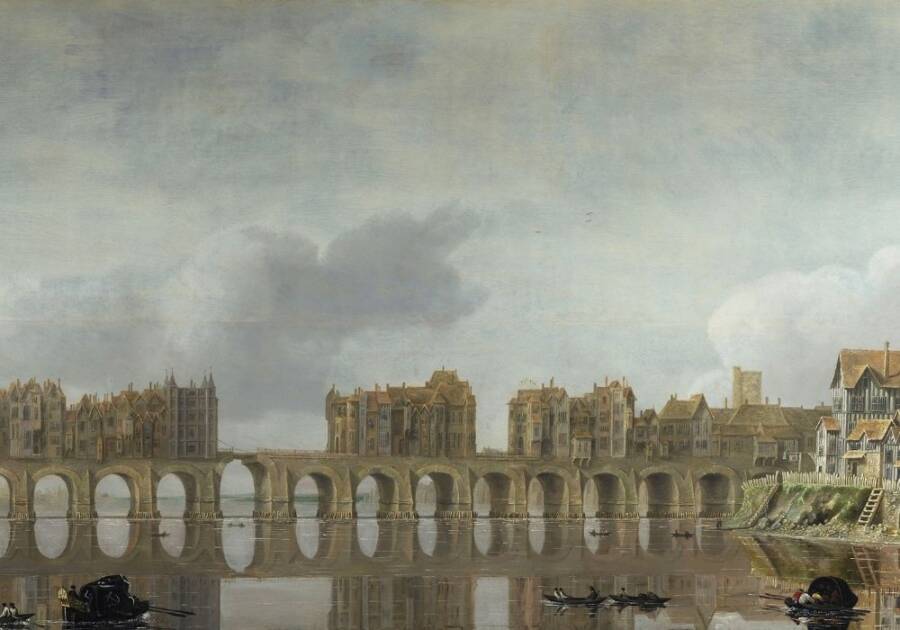
Public DomainDutch artist Claude de Jongh captured Old London Bridge in this 1630 masterpiece.
The bridge was the first stone crossing of the River Thames in London — and the only one until the 18th century. However, the Old London Bridge wasn’t just a bridge. It was topped with dozens of houses and shops, some of which stood six stories tall, and home to hundreds of people.
The bridge was also the site of great tragedy. A fire in 1212, just three years after construction was completed, destroyed the structures atop the bridge and killed thousands of people, according to some medieval records. Heads of traitors were also displayed on pikes at the drawbridge tower as a grisly warning to anyone who may have dared to cross the monarchy.
The long — and sometimes bloody — history of the Old London Bridge came to an end when it was destroyed and replaced, once in 1832 and again in 1971. And while it’s much more practical, the bridge’s modern iteration is a far cry from the towering jumble of residences, stores, pedestrians, horse-drawn carriages, and severed heads that once stood proudly on the River Thames.
What Did Old London Bridge Look Like?
The Old London Bridge wasn’t the earliest incarnation of the crossing made famous in the nursery rhyme “London Bridge Is Falling Down,” though it was the first stone structure. Its true origins stem back to when the Romans controlled the region.
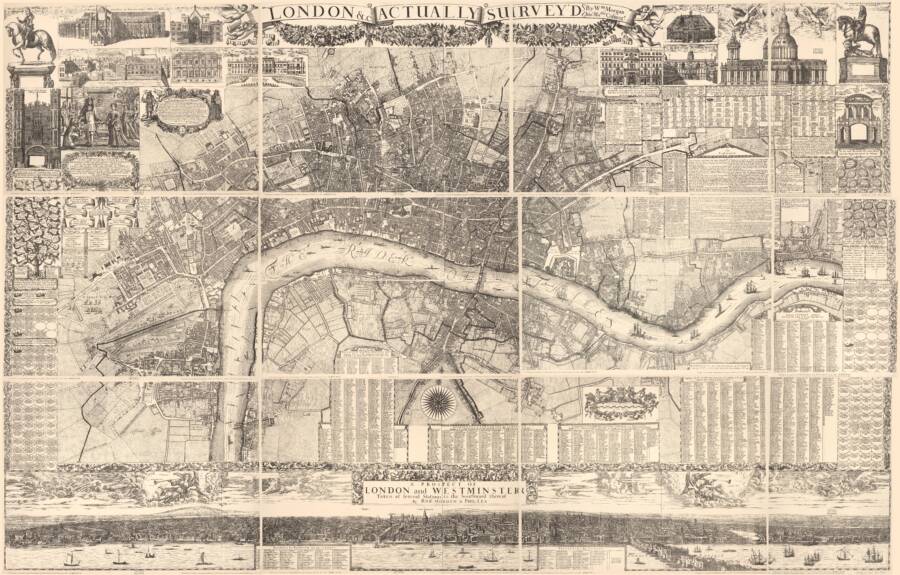
Public DomainA survey of London from 1682 shows the location of Old London Bridge, the only crossing of the River Thames in the city at that time.
Historians think it is possible the Romans constructed a wooden bridge around 50 C.E. to transfer supplies over the River Thames. However, the first concrete evidence of a river crossing near the location of the current London Bridge is from the early Middle Ages.
A series of wooden bridges were built and subsequently destroyed by either Viking invaders or natural disasters like fires. Then, in the 12th century, construction began on the Old London Bridge, the first stone crossing of London’s river.
It was commissioned by King Henry II, who wanted it to include a chapel dedicated to the recently deceased Thomas Becket, the Archbishop of Canterbury. Peter of Colechurch, a local priest, started building the foundation in 1176.
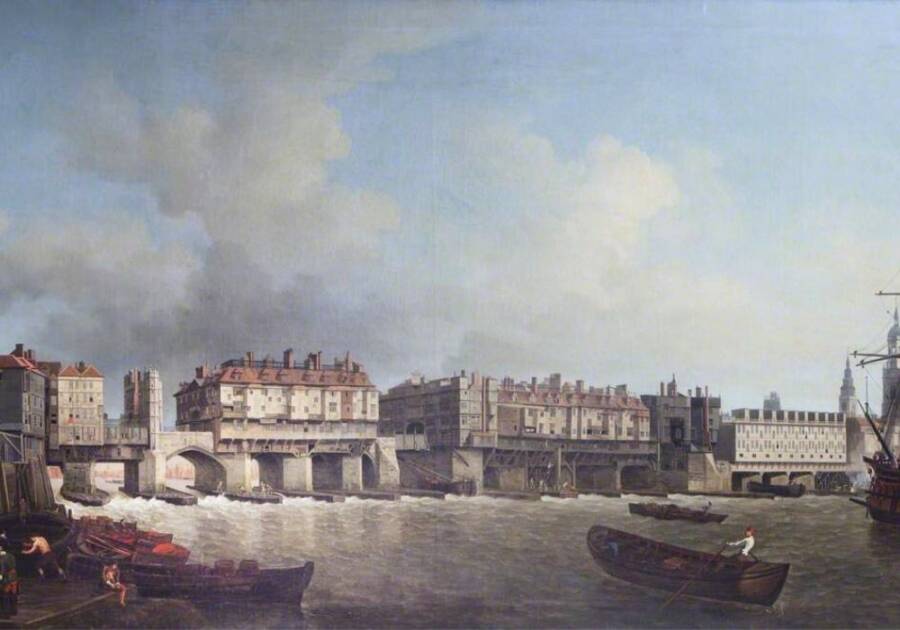
Public DomainSamuel Scott’s 1753 painting of the houses and shops lining Old London Bridge.
In addition to the chapel, houses were built on the structure to pay for its upkeep. At the time, it was the longest inhabited bridge in Europe. At one point in the 14th century, 138 homes stood atop it. Most of them had shops on the ground floor with residences above, and some were five or six stories high.
Old London Bridge was 926 feet long and between 20 and 24 feet wide, though the roadway was as narrow as 12 feet in places due to the houses on either side. It was supported by 19 pointed arches, which stood on piers in the water. The river rushed through the narrow spaces between these piers, and trying to steer a boat through the gaps when the water level was high was known as “shooting the bridge.”
The rushing River Thames wasn’t the only danger of Old London Bridge, though.
Fires, Collapsing Toilets, And The Heads Of Traitors
Old London Bridge was completed in 1209, but just three years later, a fire destroyed many of its homes.
The Great Fire of Southwark broke out in July 1212 on the south end of the bridge, and high winds blew sparks onto its wooden buildings with straw roofs. This allowed the fire to spread across the river into London proper. People from Southwark rushed onto the bridge to escape the flames, while residents on the north side of the Thames raced toward Southwark to help extinguish the blaze. Once the fire had enveloped both sides of the bridge, all of them were trapped.
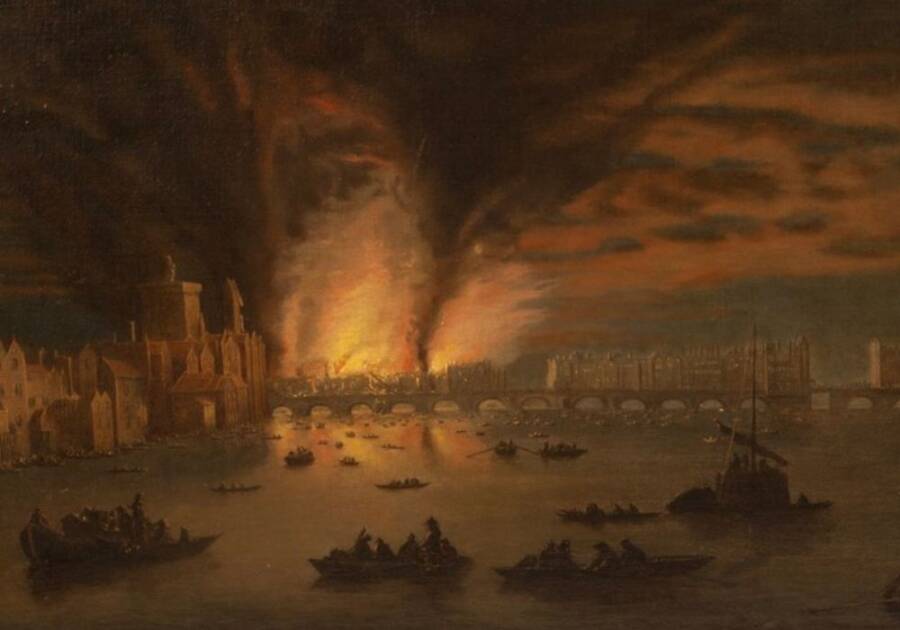
Public DomainA fire destroyed part of Old London Bridge in 1633 — but this actually prevented the Great Fire of London from spreading to Southwark in 1666.
Terrified Londoners had to jump into the river below to try to save their lives, and many of them drowned. One record from 1603 claims that 3,000 people died in the fire, though historians believe this is likely an exaggeration.
Surprisingly, Old London Bridge avoided extensive damage during the Great Fire of London in 1666. Thirty years earlier, a smaller fire had destroyed some of the houses on the bridge, leaving a gap that hadn’t yet been refilled. This prevented the fire from spreading across the River Thames and into Southwark.
Another — somewhat bizarre — disaster occurred in 1481. There were two public restrooms on either end of the bridge, and one of them crumbled into the river below while people were inside, drowning five men.
But perhaps the most grisly part of the bridge’s history came between the 14th and 17th centuries, when severed heads of traitors were displayed on pikes atop the drawbridge tower.
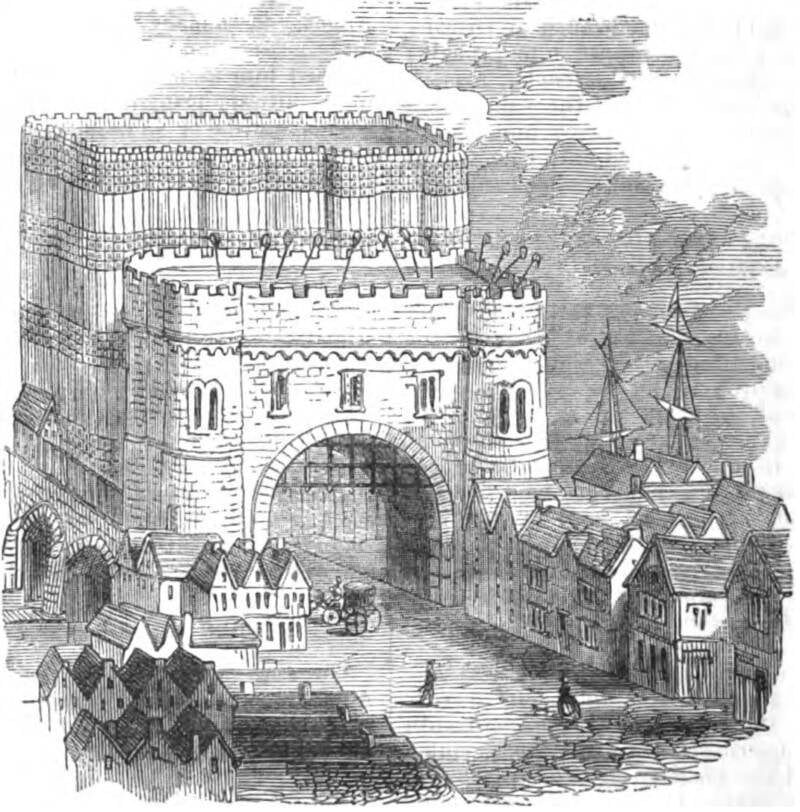
Public DomainTraitors’ heads were placed on pikes as warnings to others.
One German traveler, Paul Hentzner, wrote about the heads while visiting London in 1598:
“The whole [bridge] is covered on each side with houses so disposed as to have the appearance of a continued street, not at all of a bridge. Upon this is built a tower, on whose top the heads of such as have been executed for high treason are placed on iron spikes: we counted above thirty.”
One of the traitors whose head was displayed on the bridge was William Wallace, the knight who helped lead the War of Scottish Independence in the late 13th century. He was captured in 1305 and hanged, drawn, and quartered for high treason. His four limbs were sent to various parts of Britain to be put on view to deter other traitors, while his head remained in London.
Sir Thomas More, the Lord Chancellor for King Henry VIII, met the same gruesome fate. After Henry had him executed in 1535 for treason because More opposed Henry’s split from the Catholic Church and refused to recognize the king as the head of the Church of England, his head was placed on a pike on Old London Bridge for more than a month.
This practice continued until around 1660, when other major changes began happening to Old London Bridge, as well.
London Bridge Is Falling Down
For centuries, Old London Bridge was the only crossing of the River Thames in London. Many merchants preferred it this way, as anyone traveling to or from Southwark had to pass by their stores. However, this changed in 1750, when the Westminster Bridge opened nearby.
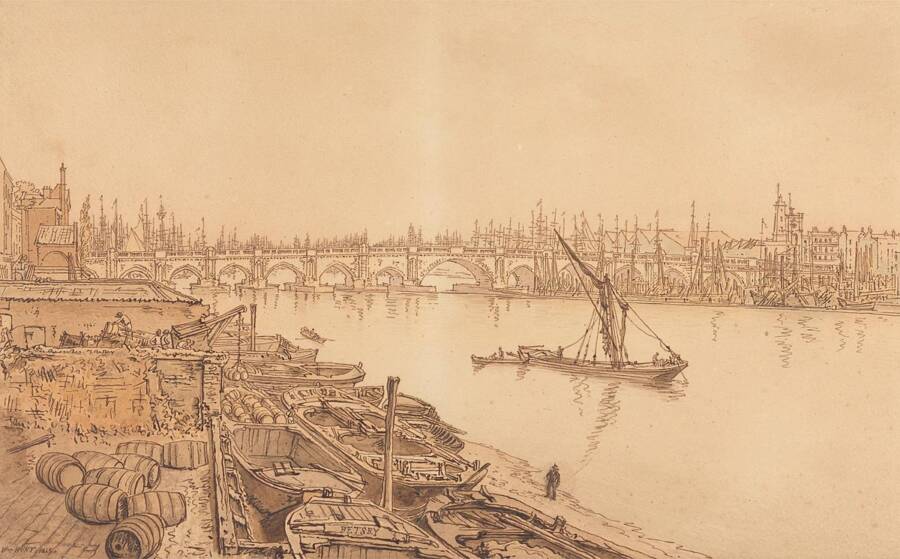
Public DomainThe two arches at the center of Old London Bridge were combined into one arch shortly before the bridge was demolished in the early 19th century.
The London Bridge Act of 1756 allowed for all the homes and shops to be demolished to improve the bridge. By 1761, the final resident of Old London Bridge had moved. The roadway was then widened, and the two center arches were combined to allow for better navigation beneath the crossing. This weakened the structure, however, and in 1799, the city began accepting designs for a replacement bridge.
The Old London Bridge was demolished in 1832 after its replacement opened 100 feet upstream. This Victorian bridge stood for another century until it was replaced by the current London Bridge in 1971. Still, the original bridge’s legacy lives on through nursery rhymes, literature, and countless works of art.
After reading about the history of the Old London Bridge, discover the story of the “murder map” from medieval London. Then, learn about the dark stories behind these seven famous nursery rhymes.






